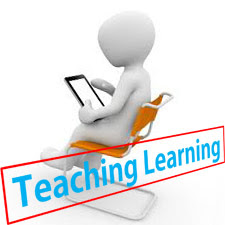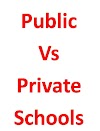Group Communication strategies refer to the Managing Meetings and Teams as well as making presentations.
a. Managing Meetings and Teams
b. Making Presentation
Although, communication is a process of exchanging messagesfrom one person to another, it does not happen in individual basis always.
There are various modes and types of communication, for example,
- Person
to person
- Person
to group
- Group
to person
- Group
to Group
Whatever the nature and type of communication, as the professional
manager, we should learn the group communication strategies well to get success
in business.
• Group
communication automatically includes the communication in meetings and teams as
well as the presentation of your ideas formally among your business
partners/subordinates/costumer etc.
• Before
moving to the managing meetings and teams and making presentation, lets discuss
some idea on how we can make our team communication effective and successful.
• Simply
we can make our group communication/communication in a team effective by
understanding and maintaining the listening skills and nonverbal
communication.
- Promoting
listening skills and strategies
- Developing
and maintaining nonverbal communication
• First
of all for the group communication we should be a good listener.
• How
to be a good listener was not highlighted in the past but now many
researches have found that everybody in business organization should develop the
quality of good listener.
Some tips for a good listening:
• Maintain
eye contact with the speaker which somehow demonstrate to the speaker that the
listener is paying attention.
• Do
not interrupt the speaker.
• Control
body language.
• A
good listener is attentive to what the speaker doesn't say is as important as
being attentive to what he does say.
• On
the other hand nonverbal communication also comparatively plays more vital role
in group communication because there is no one to one and face to face contact.
• You
can be a presenter or an audience where nonverbal communication technically
functions a very significant role.
• For
example in nonverbal we count eye contact, facial expression, body language and
many more.
• Either
in meeting and or presentation you have to focus more in nonverbal
communication because every person cannot/do not like to share their opinion
verbally (in words and sentences).
• It
is important to develop for any type of successful business or organization.
Teammates must develop trust and be more open in everyday business/
professional life.
• Team
communicate saves time than other individuals.
• It
allows team members to understand their roles and other team members’ roles.
To get success in group communication, there are the
strategies among them managing meetings and teams is important.
Managing meetings and teams require your strategies and
democratic nature as well.
Meetings refers to the formal gathering of specified people
for business purposes in which the venue, date and time normally etc are
notified already.
3-step process of managing meeting
managing meetings and teams is a process in which we have
3-steps to be completed.
- Pre meeting
step
- While
meeting step
- Post
meeting step
- Pre meeting
Step
Pre meeting as its name suggest the planning step of your
meeting.
The success of your meeting rely on the your planning. As it
is said one hour in planning saves two hours in execution, meetings requires
your well planning about the place, time, equipment, the agenda, people,
presenter and so on.
b. While meeting Step
During meeting you should manage the time for the people to
put forward their points on agenda-wise. There must be some one
who makes notes for the minutes. After listening all the voices and opinions
how do you go for the decision is another important thing the meeting organizer
or must of the time manager should do it properly.
c. Post meeting step
• This
is the final step of meeting process. The minutes is written after the
meeting/in this step.
• Must
of the time meeting allowances and refreshments are provided at post meeting
step.
• The
positive and negative aspects of the meetings are analyzed at this step.
Note:
A meeting is effective when it achieves its objectives in
a minimum amount of time to the satisfaction to the participation.
Effective meetings are managed events-they don't just
happens.
Plan
[why, what and how, where and when who etc. then pre
position key contribution, identify and overcome barriers]
Do
Follow the agenda, record group communication, practice good
meeting behaviours, Enact meeting roles, Identify next steps, Note benefits and
concerns.
Review
Evaluate meeting effectiveness, circulate meetings summary,
follow up on next steps, incorporate benefits and concerns into next meeting
plans.
Last but no the least to make your meeting effective the
basic things you should do are as follows:
• Meet
regularly. It means you have to hold regular strategy meetings
for the entire team. ...
• Be
inclusive. ...
• Be
transparent, clear and concise. ...
• You
have to show some respect. ...
• You
should recognize that being right may be wrong. ...
• Use
online collaboration tools.
Making Presentations simply refers to one type of group
communication. It is also called one of the important strategies of group
communication.
Making presentation means designing and delivering
both oral and online presentation.
• Designing
and delivering oral and online presentation is one of the major skill of an
academician/businessman/manager and so on.
• This
task is effectively and purposively handle when we follow some specific
producers.
• There
are 4 steps for delivering speeches or presentations.
• They
are: planning, developing, completing (comes under designing) and delivering.
Planning the Presentation
1st step of planning a presentation includes
analyzing the situation;
1] Analyzing the Situation
• Here
you have to design your purpose and developing an audience profile.
• Your
purpose of your presentation is to inform or persuade your
audience.
• Include
your audience’s emotional state and language preferences.
Planning the Presentation
2] Selecting the Right Medium
• Selecting
the right medium for your presentation plays a great role for your effective
presentation.
• Choose
the best combination for your presentation such as handouts, slide presentation
and pamphlets.
• Include
technological choices such as social media and webcasts.
Planning the Presentation
3. Organizing your Presentation
• Here
in this step, you have to define your main data.
• Simply
figure out the one key message you want your audience to walk away with.
• It
is always better to limit your scope while organizing your
presentation because you must work within strict time limits. Moreover,
longer you speak the less the audience will understand.
Planning the Presentation
Cont… Organizing your presentation
You have to select
your approach at this sub step. There are mainly two steps:
- Direct
approach: it is good when you want to present regular information
and good news to your audience.
- Indirect
approach: It is better to use when you want to persuade your
audience about bad news or consequences.
Furthermore,
you need to prepare your outline as well.
Step 2: Developing a Presentation
• After
analyzing the context, in the second step you have to adapt with the features
of your audience.
• Here
you adapt the audience’s size, the venue, your subject, your purpose, your
budget, and time for presentation all impact on your presentation.
• If
you have small number of audience, use a casual style that encourages
participants and use notes to jog (walk) your memory but for the large audience
it is better to use more formal way of presentation with the use of microphone
etc.
• Step
2: Developing a Presentation
Composing
your Presentation
• Introduction
• A
good introduction gets your audience’s attention, establish credibility and
prepares listeners.
• Body
• Make
sure that the organization is clear and that you hold the audience’s attention.
• Close
• Ensure
that listeners leave with your key points clear on their mind. Putting the
audience in the appropriate emotional state.
• Step
3: Completing a Presentation
Finalizing
your Slides (Optional)
• In
electronic presentation we need the software power-point which helps to edit
the presentation. You can use it to add or delete slides, reposition and check
for design consistency.
• Here
you need to be sure about title, slide, agenda and navigation
(steering/direction finding).
Example how you prepare your presenation
Regular physical exercise is important for good health.
1.Introduction
A. Opening (General Background)
Every person wants to live healthy life.
B. Hit the title/Subject matter
Continuous physical exercise is very essential to live a
healthy and happy life.
C. Supplementary (Not in the title but need to consider)
However, a person should consider about his/her eating style
and proper rest/work nature/ duties for the healthy life.
Step 3: Completing a Presentation
A. Creating Effective Handouts
• Handouts
should be an integral part of your presentation because it will
give you the confidence while presentation goes on.
• Handouts
can set you free.
-Garr Raynolds
• Handouts
can be detailed charts and table, case studies, research results or finding or
magazine articles.
Step 3: Completing a Presentation
B. Practicing your Delivery (What you Practice: Mainly
Presentation)
• Practicing
your presentation is essential ‘Practice makes perfect’.
• It
boosts your confidence and gives you more professional demeanor
(manner/behaviour).
• In
case if your audience don’t speak the same language as you, consider utilizing
an interpreter/translator.
• It
is already require to make sure you and your presentation are ready.
• You
may need to adapt the content and design of your presentation if you’re
presenting to a diverse audience.
Step 4: Delivering your
Presentation
Overcoming Anxiety
• A
lot of presenters, even pros area little nervous before a big presentation
• Nervousness
means that you care. Being nervous is good and natural but you need to control
it.
• Techniques
that will help to convert anxiety to positive energy:
• 1.Stop
worrying about being perfect
• 2.Know
your subject
• 3.Practice,
Practice, Practice
• 4.Breathe
in breathe out
• 5.
Maintain eye contact
Step 4: Delivering your Presentation
Handling Questions Responsively
Ø Questions
are important to a presentation
Ø They
give a chance to obtain important information, emphasize main idea, and build
enthusiasm.
Ø If
you don’t want to answer; you can provide the discussion session at end of
presentation.
Ø If
you are asked a complex question, answer carefully.
Giving Online Presentation
• It
gives the opportunity to present with a geographically or worldwide audience at
a fraction of the cost of travel.
• Some
advice to ensure successful online presentations.









0 Comments